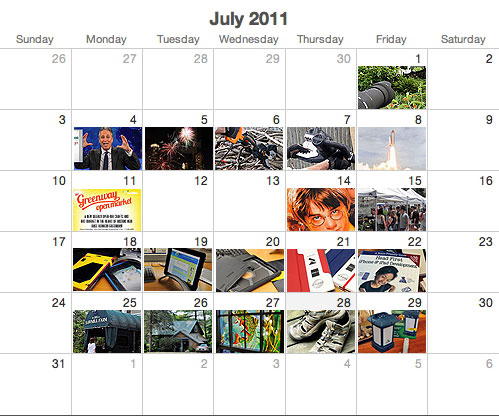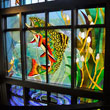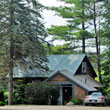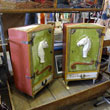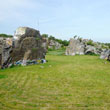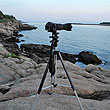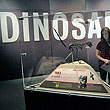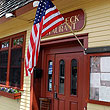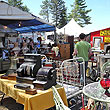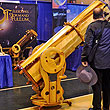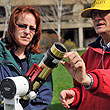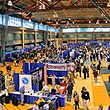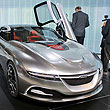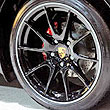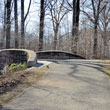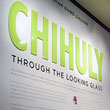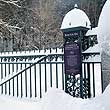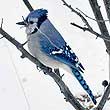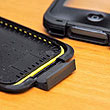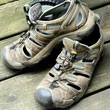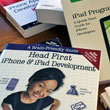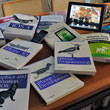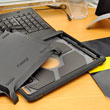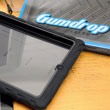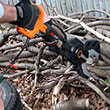When we decided on two of Clayton Boyer's clock plans in June we thought they were going to be our only RainyDayProjects for this Winter. However, when we saw Clayton's latest kinetic sculpture, we knew we had to add one more to the project list. This outrageously ingenious creation is called Space Time Continuum. Three projects are a lot and we realized that we may need some help if we wanted to get them all completed before next Spring.

As most experienced project managers know, there are only three "levers" one can manipulate when managing a project: time, quality, and resources. One can always extend the deadline, or not be as exacting in the work before calling it "done," or add more "hands" to the team. As the first two are not something we are willing to change at this time, the only option to adjust is adding some resources. We expect that cutting out the wooden gears and such will be a significant part of the build-effort. Changing how we are going to do that may have the largest time impact. While we love our RainyDayInterns and they are quite helpful at times, some of them are not so good with tools. What we need is a new assistant, one who can do things quickly and precisely (so as not to impact either time or quality). What we need is a CNC machine.

The idea of a Computer Numerical Control (CNC) machine is simple: a cutter is mounted in such a way that it can be moved in three dimensions (x,y,z), the movement in any one direction is controlled precisely by stepper motors, the stepper motors are moved by coordinates fed to it by a computer. As one would expect, CNC machines evolved the automation of milling machines. The automation of machine tool control began in the 19th century. However, it wasn't until John T. Parsons in the 1946, hooked up a computer (punch cards in those days) to a machine to cut out the complicated curves required to manufacture helicopter blades that the power of CNC was first realized. Today, DIYers can build a CNC machine or even a 3D printer for use at home. Clayton Boyer will supply DXF files to drive a CNC machine with some of the plans purchased. Fortunately for us, all three of the plans we purchased did have that option.

In July, we started doing research on what's the best way to go about building a CNC machine. There is a huge amount of information (plans, parts, complete kits) on the Web on DIY CNC. After reading up on the subject, we narrowed our options to complete CNC kits only. Normally, we would not mind spend time scouring for parts, but in this case we were just not knowledgeable enough on the subject to be able to know what parts were swappable.

Even with limiting our choices to just CNC kits, there are still a lot of different possible vendors. Back in January, Stephen McGloughlin posted a KickStarter proposal for a DIY Desktop CNC Machine. His funding request of $15K was funded to the tune of almost $70K! Clearly the demand for these things are out there. Unfortunately, the availability of the kit did not match our schedule. Readers who want a better understanding of the DIY CNC machine designed by Stephen should purchase the eBook. It contains all of the schematics, build instructions, and cutting dimensions for the project.

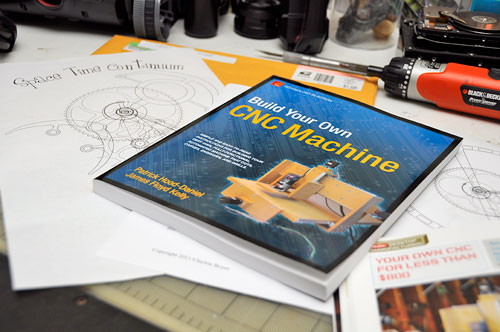
The DIY kit that held the most promise was one designed by Patrick Hood-Daniel called the BlueChick. Before we decided, we got Patrick's book "Build Your Own CNC Machine" to get a better understanding of his CNC design. After working our way through the book, we were certain the BlueChick was the way to go and got one in house. Look for the write-up of the BlueChick CNC build series in the coming week. [Permalink] - DIY CNC
|

